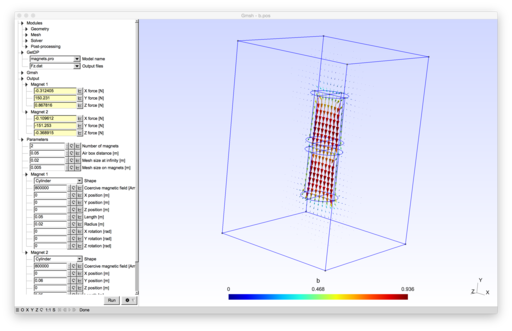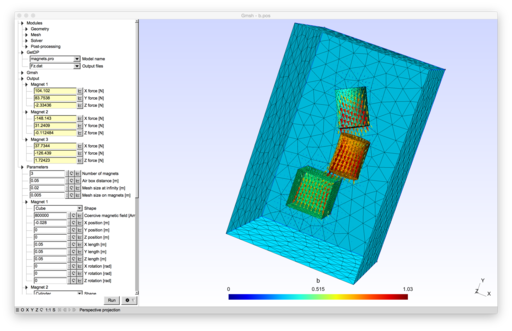Difference between revisions of "Magnets"
From ONELAB
(Created page with "{{metamodel|magnets}} == Additional information == To run the model, open '''magnets.pro''' with Gmsh. The model uses a magnetic scalar potential formulation to solve the...") |
(→Additional information) (Tags: Mobile edit, Mobile web edit) |
||
| (One intermediate revision by the same user not shown) | |||
| Line 1: | Line 1: | ||
| − | {{ | + | {{metamodelGetDP|magnets}} |
| Line 6: | Line 6: | ||
To run the model, open '''magnets.pro''' with Gmsh. | To run the model, open '''magnets.pro''' with Gmsh. | ||
| − | The model uses a magnetic scalar potential formulation to solve the magnetostatic Maxwell system in three dimensions. The forces are computed using the Maxwell stress tensor. | + | The model uses either a magnetic scalar or vector potential formulation to solve the magnetostatic Maxwell system in three dimensions. The forces are computed using the Maxwell stress tensor. |
{{metamodelfooter|magnets}} | {{metamodelfooter|magnets}} | ||
Latest revision as of 13:35, 11 August 2015
|
3D force computation between a collection of magnets.
|
 
|
|---|
|
Download model archive (magnets.zip) |
Additional information
To run the model, open magnets.pro with Gmsh.
The model uses either a magnetic scalar or vector potential formulation to solve the magnetostatic Maxwell system in three dimensions. The forces are computed using the Maxwell stress tensor.
|
Model developed by C. Geuzaine.
|

